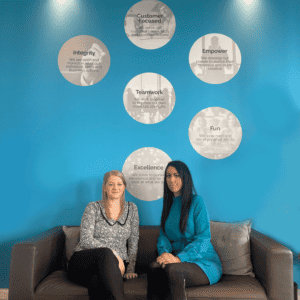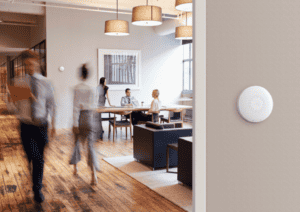Mental Health Awareness Week (12–18 May) gives us all a much-needed nudge to pause and reflect on how we’re really doing – especially in the fast-paced, often high-pressure world of building services. Tight deadlines, compliance pressures, and the physical demands of our sector can take their toll, yet conversations around wellbeing are still too often side-lined or treated as a tick-box exercise.
But what do we actually mean by wellbeing?
Broadly speaking, well-being is a state of being comfortable, healthy, or happy. That’s the textbook answer. But let’s get real for a moment.
For me, wellbeing is about being able to live a relaxed and happy life while also being able to deal with the inevitable day-to-day challenges that come our way. It’s not about pretending everything is fine when it’s not, or forcing positivity. It’s about resilience, support, and designing environments – both physical and cultural – that help people thrive rather than just survive.
Industry Standards Are Catching On
Thankfully, the idea that the built environment can and should support human wellbeing isn’t just a fluffy ideal anymore – it’s becoming a core component of design, especially in commercial buildings.
Frameworks like the WELL Building Standard (by the International WELL Building Institute) and Fitwel (originally developed by the U.S. Centres for Disease Control and Prevention) have brought some structure and science to the conversation. These standards provide measurable criteria across areas such as air quality, lighting, comfort, nutrition, and even mental health support. Their goal? To create buildings that actively support the health and well-being of their occupants.
Closer to home, the British Council for Offices (BCO) produced the excellent “Wellness Matters” report, which makes a strong business case for investing in health and wellbeing in workplace design. It highlights that productivity, staff retention, and overall job satisfaction are closely linked to how well a workspace supports its people – and not just in terms of ergonomic chairs or natural light, but in creating a culture that values human wellbeing.
Why Should the Building Services Sector Care?
Let’s be honest – we’re not always the first industry that comes to mind when you think of workplace wellness initiatives. But maybe we should be.
As professionals who design, maintain, and manage the systems that make buildings functional and safe, we’re in a unique position. We can influence not just how people work, but how they feel while they work. Whether it’s ensuring good ventilation, thermal comfort, acoustic control, or lighting quality – our work directly impacts occupant wellbeing.
More importantly, we need to look after ourselves and our teams. It’s easy to slip into a cycle of long hours, constant pressure, and neglecting the basics – eating well, moving enough, and switching off at the end of the day. But the impact of chronic stress and poor well-being isn’t just personal – it’s professional.
The Business Case for Wellbeing
Investing in staff wellbeing is not just the right thing to do – it’s also smart business. Here’s how:
- Reduced Absenteeism: Healthier employees take fewer sick days.
- Increased Productivity: Staff who feel well – physically, mentally, emotionally – work more efficiently.
- Improved Retention: People are more likely to stay where they feel supported and valued.
- Enhanced Reputation: Companies that prioritise wellbeing attract better talent and tend to have stronger client relationships.
- Better Decision-Making & Teamwork: A positive, balanced workforce tends to communicate better and solve problems more creatively.
Wellbeing isn’t just about beanbags and fruit bowls (although no one’s knocking a good banana). It’s about making sure your people feel human – and treated as such – every single day.
A Moment to Reflect – and Reset
Mental Health Awareness Week is a chance to have meaningful conversations about what support looks like in real terms. It’s also a great time to try something new that supports wellbeing – whether that’s taking a break, moving more, or looking at how your workplace environment could be improved.
To support this, CIBSE North West Chair and 25-year yoga practitioner David Glover is running a free 45 minute online session titled:
The Art of Doing Absolutely Nothing (Properly)
📅 Wednesday 14 May, 8pm
💻Registration link
This session is open to all, regardless of flexibility or yoga experience. We’ll start with some gentle, accessible yoga movement to ease out the creaks and open the body. Then we settle into a nourishing Yoga Nidra practice. Perfect to thoroughly relax the body and mind for a proper reset.
It will offer simple techniques to manage stress, improve focus, and boost energy – tools that can make a real difference, whether you’re on-site, behind a desk, or in back-to-back Teams meetings.
You’ll need a quiet space, a blanket, a cushion, and yourself—no effort required.
In Summary
Wellbeing isn’t a luxury or a buzzword. It’s foundational to how we live, work, and build. As a sector, we need to take it seriously – not just for the people who use the spaces we design, but for the people who create and manage them too.
So, as Mental Health Awareness Week approaches, ask yourself – what does wellbeing look like for you and your team? And more importantly, what small step can you take this week to make it a little better?








